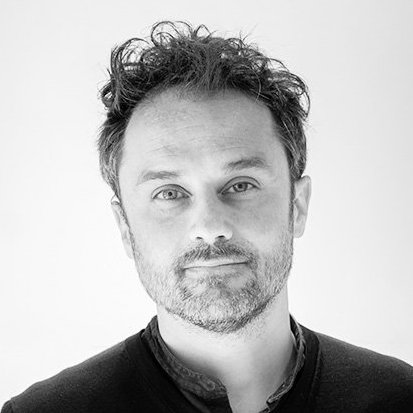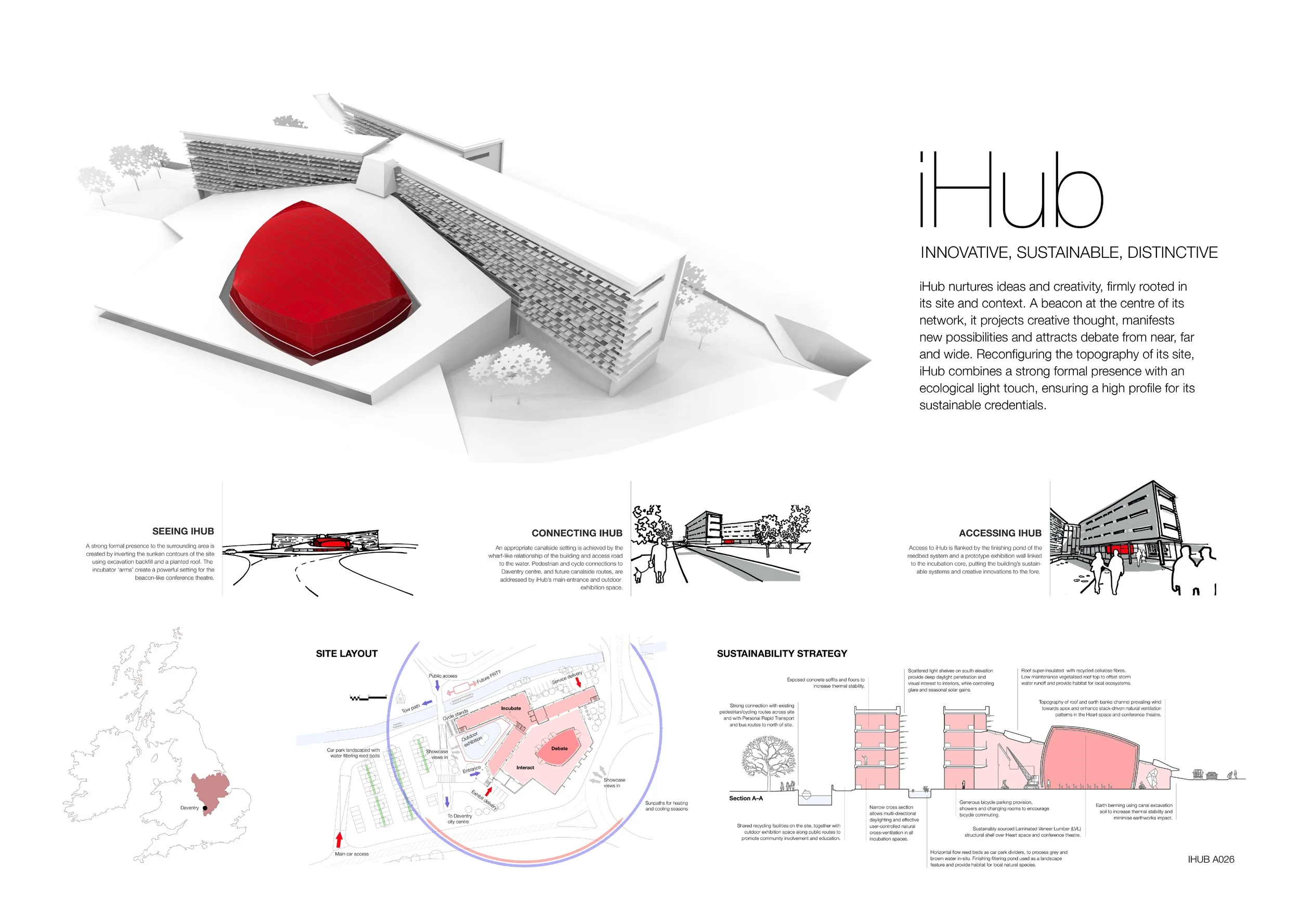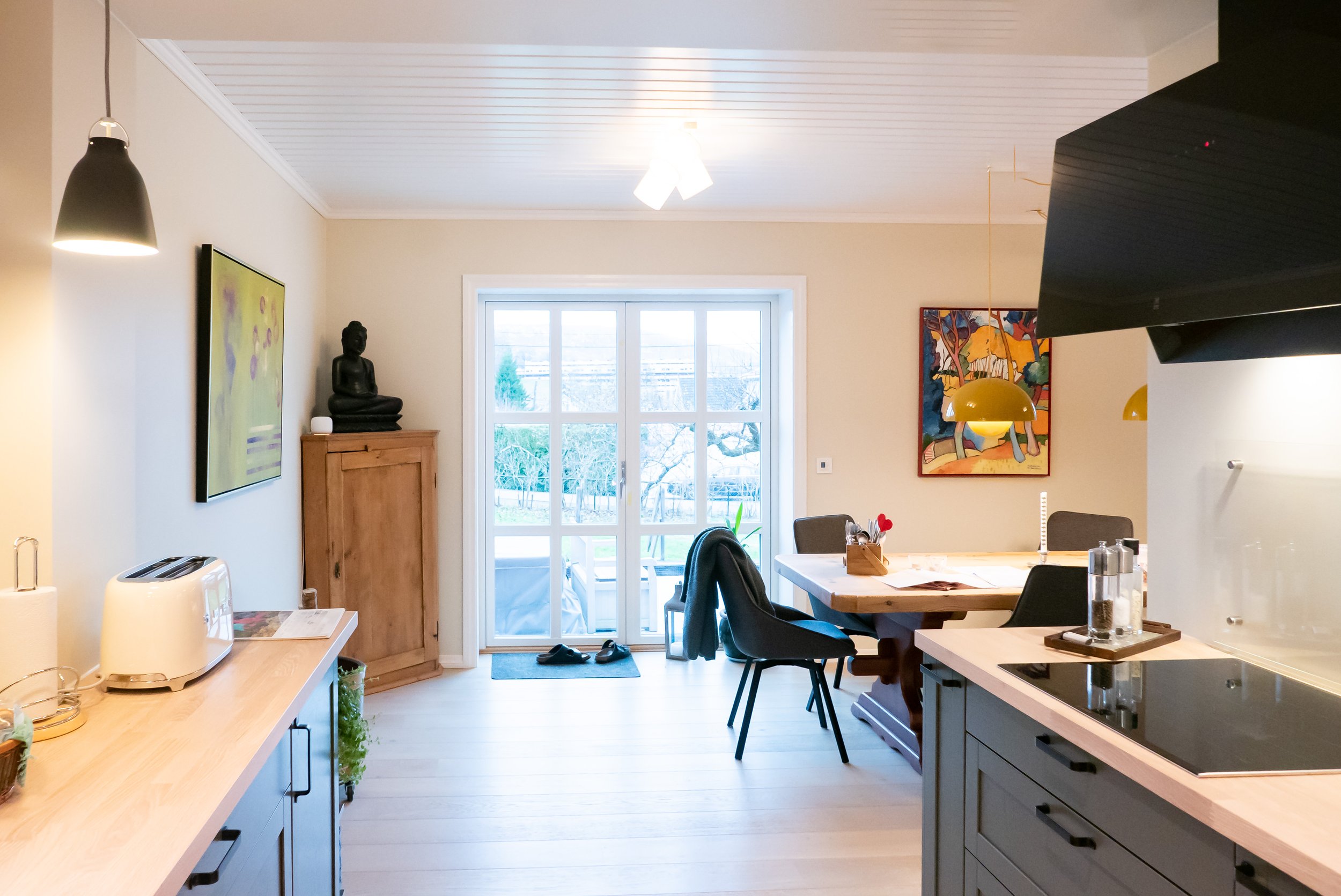Christmas decorations made from a repurposed Simpsons cartoon book.
There is no such thing as wasted heat
A batch of homemade bread proofing on my Mac Mini, while its processor is crunching the numbers of my 3D modeling...
Hub sketches
Some sketches for a short-listed competition entry — The Hub — a collaboration between 2hD, Boden Associates and Shared Architecture.
Portfolio project
iHub competition
This joint entry project, involving 2hD, Boden Associates and Shared Design, provides a beacon for projecting creative thought through a strong formal and spatial presence, connected with the surrounding canal, road and cycle routes and characterised by a light ecological touch.
The Heart of the iHub: a brightly coloured conference theatre in the social exhibition space
This Building Research Establishment (BRE) competition called for an innovative hub and office building to link centres of excellence in the built environment with entrepreneurial business in order to promote innovative and sustainable technologies. Submitted designs were also encouraged to connect the local town community with the building and its agenda of sustainability and innovation.
The brightly-clad conference theatre pod sits within a highly flexible and dramatically-lit exhibition space, which in turn acts as the activity heart and connective node of the complex. The greened roof above the exhibition hall innovatively reconfigures the site topography providing a new habitat for local ecosystems and driving the natural ventilation inside.
For this competition entry, we extensively used storyboarding techniques to communicate the social dynamics of our proposal. In particular, we presented the way the public would experience the spaces, from the dual perspectives of two fictional characters meeting at iHub: Tony, a resident innovative builder, and Deborah, a potential investor visiting the centre.
Our key achievements in this project:
- establishing the right level and pattern of connections with the local town
- distilling the client’s main values needing to be addressed in the project
- establishing the relational logic of the set of activities to be accommodated
- determining a fundamental and innovative sustainability strategy
- marrying sustainability aims with an exciting experience of visiting or working in the building
Ceramics workshop
Deconstructed architecture on the island of Nao-Shima, in the Inland Sea of Japan.
Sneinton Trail map
To tell visitors and residents the hidden story of the neighbourhood of Sneinton, a local social enterprise asked us to create a 3D visualisation of the area, where we also live and work. This formed the centrepiece of a printed brochure promoting a tourist trail around Sneinton’s historic attractions.
The final map, carefully crafted to be accessible and engaging, while still representing enough information for orientation and navigation
We have had a long term involvement with Sneinton Alchemy, a local social enterprise dedicated to making Sneinton a better place to live and work. The Sneinton Trail was one of their projects, inviting local people and visitors to discover the jewels hidden in the winding streets surrounding George Green’s famous windmill.
Teaming up with Nottingham Essence, who gathered information about the local history and took care of laying out the brochure, we set about creating an accessible and engaging “treasure map” for our neighbourhood.
We were keen to get across a sense of the landscape and built form, something that is often missing from standard tourist maps. We started by creating a three-dimensional computer model of Sneinton, which served as a basis for the design of the map. Some extra visual survey and on-site sketches brought life and visual clues into the model.
The exercise then became a subtle exploration of alternative presentation techniques and colour schemes to strike a balance between, on one hand, keeping the map as simple and readable as possible and, on the other hand, providing enough details for the visitors to easily orient themselves and navigate along the trail.
The finished brochure was distributed to all residents of the area, inviting them to go and explore their local heritage. You can also get a free copy of the brochure at many of Nottingham’s tourist attractions, and of course at Green’s Mill!
We created a simplified 3D computer model of the urban space by mashing up scaled maps and on-site photography and sketches
We helped Sneinton Alchemy put together a funding bid for the project by visualising the finished product, explaining the strategy and outlining the community benefits.
“I enjoyed working with 2hD on the Sneinton Trail leaflet: they brought a range of professional experience but were always open to incorporating other people’s ideas!”
Leak
Torrential rain leaking into Nikola Tesla airport in Belgrade, Serbia.
Portfolio project
Broadway School
As part of the nationwide programme Building Schools for the Future, 2hD were asked by Lathams Architects to work on the conceptual development of one of the exemplar designs — the renovation and rebuilding of an existing 1960s school to accommodate an additional 300 pupils on a tight inner city site, within a limited £15m budget.
Our consortium later on won the bid for the Building Schools for the Future programme in Birmingham.
We were approached at an early stage of the design process and we focused on:
- carrying out key site studies, including access and climatic factors,
- developing the initial conceptual design,
- replanning the building and site to accommodate a new flexible teaching model,
- designing the interiors in response to the tight technical and financial constraints.
We worked closely with other consultants, including fire and structural engineers, landscape designers and education experts to integrate their input to the core of the design approach.
Our approach:
- redesigning the school to ensure a friendly welcome and easy circulation for staff, pupils and the community.
- Incorporating a deep understanding of the transition in teaching methods to allow this to happen naturally over time.
- creating pleasant learning environments within the pressures of a tight budget and limited space on site.
We initially developed alternative design concepts exploring the subtle relationship between the school and the surrounding communities.
We initially developed alternative design concepts exploring the subtle relationship between the school and the surrounding communities
We sketched extensive and detailed views of the proposed teaching spaces to communicate design ideas to the client and the other members of the team
The evolution of educational methods was to be embedded into the design and we made sure that all teaching spaces were flexible to allow a smooth transition over time
Portfolio project
Broadsheet Trees
What do the people of Nottingham think about the built environment around them? How do they interact with it? What role do they have in the future development of the urban space in which they live? How do they imagine this future?
As part of Architecture Week 2007, we teamed up with people from Casciani Evans Wood to create an interactive exhibition — Broadsheet Trees — that would voice the opinions and aspirations of the Nottingham people about their city.
Situated in the neoclassical Arcade Exchange in the heart of Nottingham, just a few steps from the City Council, the exhibition took the form of a series of stylised ‘trees’ on which passer-bys were invited to express themselves using colour-coded leaves that they pinned up on the branches. As the exhibition went on, the trees grew into large colourful objects, creating an intriguing and engaging platform for public expression.
As the exhibition goes on, the trees grow into large colourful objects, creating an intriguing and engaging platform for public expression
With more than 500 entries in a single week, the exhibition was a great success. The Broadsheet magazine later added the voiced opinions to their website, inviting visitors to participate in a public debate about the future of Nottingham’s cityscape.
Designed to be easily manufactured on a tight budget and assembled with simple handtools, we have since helped on many occasions local grassroots organisations to use these trees as a friendly and fun way to engage their communities in public consultations and events.
This project was commissioned by Arts Council England, the Royal Institute of British Architects (RIBA) and the Architecture Centre Network.
The project was run on a very tight budget and timescale, so we made sure that all the elements of the installation could be made quickly by ourselves
Portfolio project
A beach hut
Netker 10 (pronounced ‘net curtain’) was 2hD’s entry to the Bathing Beauties competition to design a landmark beach hut for the Lincolnshire seaside. The project allowed us to explore our interests in site, identity, materials and prefabrication. Great fun and we even got to play with models!
Our physical model for the Netker 10 beach hut, submitted for the Bathing Beauties competition
Netker 10 is a landmark and hideaway for Lincolnshire. Strikingly different from its neighbours, it celebrates the traditional English seaside holiday.
Netker 10 encourages play – inside and out. Flexible to allow the comings and goings of a beach holiday, the hut also allows people to play with their public profile – be it fun, reserved, chilled or outgoing. True to beach hut history, Netker 10 provides privacy for a decorous seaside sojourn, but takes this further by engaging passers-by in a game of peek-a-boo in which the occupant decides just how much to reveal.
Lower the outer mesh doors to take a snack whilst keeping an eye on the beach, the sunset and the folk strolling by. Raise the outer doors to shade the promenade or welcome visitors. Pivot the inner doors to slip into your swimmers. Shut all doors for lock-down mode, and do what you like in there. Or open it all up and let it all hang out.
The randomly-laced cables allow views out, but catch the eye of passers-by, making it tricky to see in. By rediscovering the net curtain, Netker 10 plays with inside and outside, with seeing and being-seen. It filters the elements, creates patterns with light, controls views and access.
The inner layer of pivoting and sliding doors allows fine-tuning of the connection to the outside, creating the ideal family hide. It also gives flexibility for Netker 10 to become a micro-café: ground floor servery, rooftop mini-terrace. Nested in the elevated platform, breathtaking views of Lincolnshire can be enjoyed.
The diaphanous skin is created with vandal-proof and weather-resistant steel reinforced nylon rope (commonly used in playgrounds), laced over an engineered timber frame with marine ply infill panels. Exterior timber is stained, interior surfaces exposed to create a welcoming and warm space.
Nothing like camping holidays on the site of the competition, on the Lincolnshire coast, to develop our concept and ideas!
Sky Vault in the Guardian
The Guardian published an article about the development of the Sky Vault landmark project.
Sky Vault in the Sunday Times
The Sunday Times had a feature today on our Sky Vault landmark project.












































